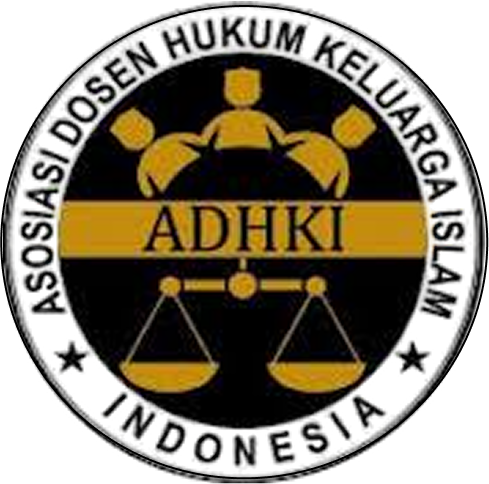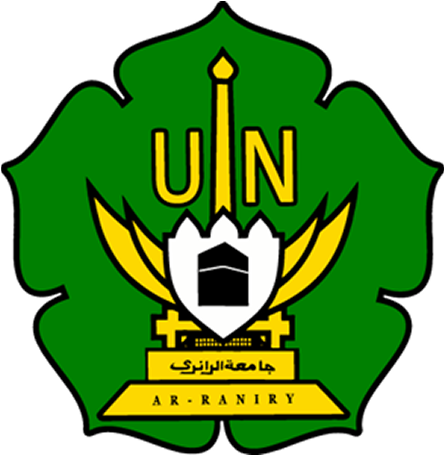The Perception of South Sulawesi Scholars Regarding Hadith and Law on Menstrual Blood Stains
A Study of the Maanil Hadith Approach
DOI:
https://doi.org/10.22373/nbvyjv53Keywords:
Interpretasi kontekstual, pemahaman hadis, mengerik noda haid, nail al-auṭār, hukum IslamAbstract
Scraping menstrual stains is a form of command to clean clothes that are affected by menstrual blood. This commandment is a form of leniency given in relation to the issue of purification which cannot be separated from the problem of worship. The ma'āni-ḥadīṣ approach, in this case refers to the contextual interpretation technique proposed by Arifuddin used as a knife for analyzing hadith and Islamic law on the issue of scraping menstrual stains. Data collected through various literature is then analyzed and elaborated using contextual interpretation techniques. The results of this study show that the contextual analysis of hadith gives rise to the understanding that there is an order to clean clothes that are affected by menstrual blood. Cleaning menstrual blood is done by scraping the stain marks attached to the fabric. The hadith related to scraping menstrual stains indicates that it is permissible to use cleaning agents, such as detergent as a form of maximizing efforts to clean stains or menstrual blood attached to the fabric. However, if the stain cannot be removed, then the cloth or clothing can be used for prayer and is a form of relief related to worship problems.
References
Abū Dāwud, Sulaimān ibn al-Asyʻaṡ ibn Isḥāq ibn Basyīr ibn Syidād ibn ʻAmru al-Azdī as-Sijistānī. “Sunan Abī Dāwud.” In 1-4, edited by Muḥammad Muḥyī al-Dīn ʻAbd al-Ḥamīd. Beirut: al-Maktabah al-ʻAṣriyyah, n.d. https://shamela.ws/book/1726.
Ahmad, Arifuddin. Metodelogi Pemahaman Hadis: Kajian Ilmu Ma’ani Al-Hadis. Edited by Zulfahmi Alwi. 2nd ed. Makassar: Alauddin University Press, 2013.
Al-‘Asqalānī, Aḥmad bin ‘Alī bin Ḥajar Abū al-Fadl. “Fatḥ Al-Bārī Syarḥ Ṣaḥīḥ Al-Bukhārī.” In 1-13. Beirut: Dār al-Ma‘rifah, 1379.
Al-Bukhāri, Abū ʻAbdillāh Muḥammad ibn Ismāʻīl ibn Ibrāhīm ibn al-Mugīrah al-Juʻfī. “Al-Jāmiʻ Al-Musnad Al-Ṣaḥīḥ Al-Mukhtaṣar Min Umūr Rasūl Allāh Ṣallā Allāh ʻalaih Wasallam Wa Sunanih Wa Ayyāmih.” In 1-9, edited by Muḥammad Zuhair ibn Nāṣir al- Nāṣir. Dār Ṭauq al-Najāt, 1422. https://shamela.ws/book/1681.
Al-Maḥallī, Jalāluddīn Muḥammad bin Aḥmad, and Jalāluddīn ‘Abdurraḥman bin Abī Bakr As-Suyūṭī. Tafsīr Jalālain. Kairo: Dār al-Ḥadīṡ, n.d.
Al-Nawawī, Abū Zakariyyā Muḥyī al-Dīn Yaḥyā bin Syarraf. “Al-Minhāj Syarah Ṣaḥīḥ Muslim Bin Al-Ḥajjāj.” In 1-18, 2nd ed. Beirut: Dār Iḥyā’ at-Turāṣ al-‘Arabī, 1392.
Al-Yamanī, Muḥammad bin ‘Alī bin Muḥammad bin ‘Abdullāh asy-Syaukānī aṣ-Ṣan‘ānī. “Fatḥ Al-Qadīr.” In 1, 1st ed., 1–9. Damaskus - Beirut: Dār Ibn Kaṡīr – Dār al-Kalim aṭ-Ṭīb, 1414.
At-Tūnisī, Muḥammad at-Ṭāhir bin Muḥammad bin Muḥammad at-Ṭāhīr bin ‘Āsyūr. “At-Taḥrīr Wa at-Tanwīr – Taḥrīr Al-Ma‘nā as-Sadīd Wa at-Tanwīr Al-‘Aql Wa Al-Jadīd Min Tafsīr Al-Kitāb Al-Majīd.” In 2, 364–69. Tunisia: Dār at-Tunīsiyyah li an-Nasyr, 1984.
Azzam, Ummu. La Tahzan Untuk Wanita Haid. 1st ed. Jakarta: QultumMedia, 2012.
“HaditsSoft.” Home Sweet Home, 1440. https://archive.org/details/SetupHaditsSoft.
Khomaeny, Elfan Fanhas Fatwa, and Chandrawaty. Pesan Cinta Untuk Anakku. Edited by Siti Anisah. 1st ed. Tasikmalaya: Edu Publisher, 2019.
Lajnah Pentashihan Mushaf Al-Qur’an. “Qur’an Kemenag.” Kementerian Agama Republik Indonesia, 2019. https://quran.kemenag.go.id/.
Risdahyanti, Risdahyanti. “Hadis Tentang Mengerik Noda Haid Dalam Kitab Nail Al-Auṭār Karya Asy-Syaukānī.” Universitas Islam Negeri Alauddin Makassar, 2022. https://repositori.uin-alauddin.ac.id/22332/.
Rizal, Fauzi. “Metode Imam Asy-Syaukani Dalam Menyusun Kitab Nailul Autar Syarh Muntaqal-Akhbar.” Studi Multidisipliner: Jurnal Kajian Keislaman 5, no. 2 (2018): 41–55. https://doi.org/10.24952/multidisipliner.v5i2.1113.
Tangngareng, Tasmin, I Gusti Bagus Agung Perdana Rayyn, and Al-Fiana Mahar. “Haid Perspektif Al-Qur’an (Analisis Terhadap Ayat Kesehatan Reproduksi Wanita QS. Al-Baqarah/2: 222-223).” Jurnal Ushuluddin: Media Dialog Pemikiran Islam 25, no. 2 (2023): 222–23. https://doi.org/https://doi.org/10.24252/jumdpi.v25i2.39305.
Tangngareng, Tasmin, Fadhlina Arief Wangsa, and I Gusti Bagus Agung Perdana Rayyn. “Interpretation of the Hadith Regarding the Command to Wipe the Khuf: Study of AGH. Lanre Said’Work in the Islamic Law Perspective.” Samarah: Jurnal Hukum Keluarga Dan Hukum Islam 8, no. 2 (2024): 1301–23. https://doi.org/http://dx.doi.org/10.22373/sjhk.v8i2.20401.
Ulum, A. R. Shohibul. Fiqih Seputar Wanita. Yogyakarta: Anak Hebat Indonesia, 2021.
Widad, Sofiatul. “Konsepsi Saat Masa Menstruasi Berdasarkan Perspektif Fiqih Dan Medis.” Oksitosin: Jurnal Ilmiah Kebidanan IV, no. 1 (2017): 14–28. https://journal.ibrahimy.ac.id/index.php/oksitosin/article/view/372.
Published
Versions
- 2025-09-14 (4)
- 2025-09-14 (3)
- 2025-09-14 (2)
- 2025-09-14 (1)
Issue
Section
License
Copyright (c) 2025 Muhammad Ali, Risdahyanti Risdahyanti, Silfi Khaerah

This work is licensed under a Creative Commons Attribution-ShareAlike 4.0 International License.
Authors who publish in Samarah: Jurnal Hukum Keluarga dan Hukum Islam agree to the following terms:
- Authors retain copyright and grant the journal right of first publication with the work simultaneously licensed Attribution-ShareAlike 4.0 International (CC BY-SA 4.0) that allows others to share the work with an acknowledgment of the work's authorship and initial publication in this journal.
- Authors are able to enter into separate, additional contractual arrangements for the non-exclusive distribution of the journal's published version of the work (e.g., post it to an institutional repository or publish it in a book), with an acknowledgment of its initial publication in this journal.
- Authors are permitted and encouraged to post their work online (e.g., in institutional repositories or on their website) prior to and during the submission process, as it can lead to productive exchanges, as well as earlier and greater citation of published work. (See The Effect of Open Acces)









